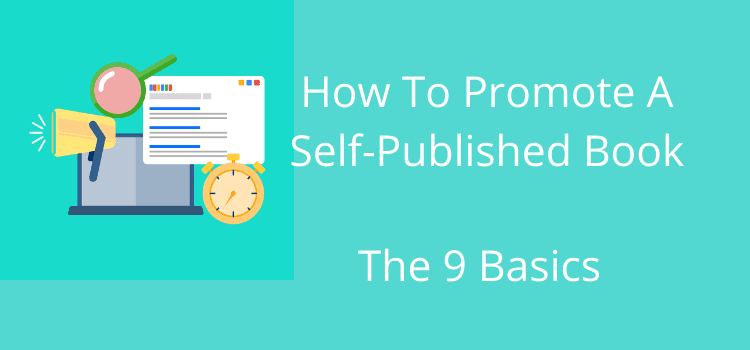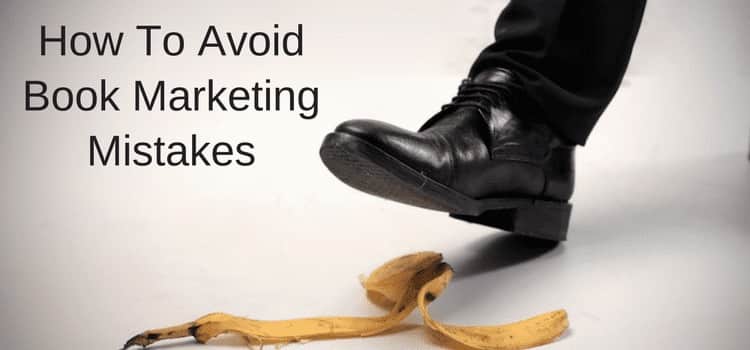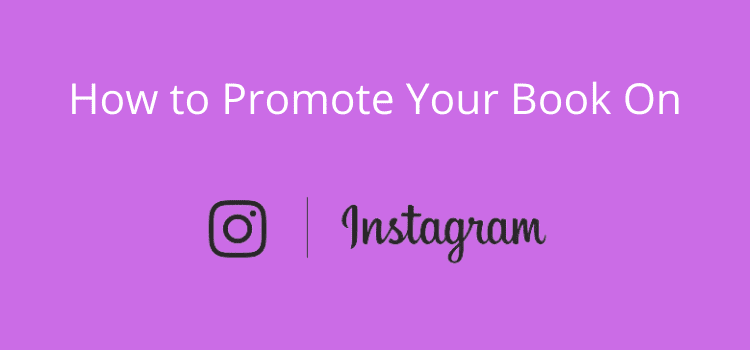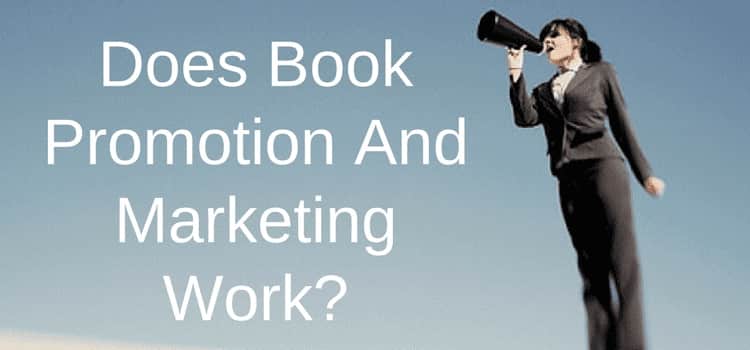
There are hundreds of ways to promote a self-published book.
However, if you don’t get your marketing strategy basics right first, you could waste a lot of your time, energy, and money.
Many, if not most, authors who self-publish for the first time make mistakes.
It is completely normal because you are trying to do something new and don’t have much experience to fall back on. Hopefully, these tips will help.
Learning how to promote a self-published book
You don’t have money to burn, so you try to launch and market your book on Amazon on a shoestring budget.
Some new authors take this even further and try to do absolutely everything for free.
In both cases, authors try to do everything themselves, which is fine up to a point.
But the most crucial time is your book launch.
If you don’t have everything in place before publishing, you will play catch-up for a long time.
It is always better to get hold of the best book promotion tools you can find.
Then, take the time to learn how to attract attention to your book before it goes on sale.
You need to know your target audience and where you can promote to attract their attention.
Perhaps Facebook for a cozy romance or Instagram for fantasy and paranormal.
Concentrating your marketing efforts in the weeks or months before publishing your book will give you a much better chance of success.
Your self-publishing checklist
It will show if you lack the knowledge or skills necessary for self-publishing, which will reflect poorly on both you and your new book.
Cutting on expenses is one thing. But it is very rare to find a business of any kind, including self-publishing, that has succeeded on the back of one person’s skills without a cent of investment.
I will begin my advice with the three key elements a book needs to succeed.
If you think your book fails on any of the first three points, you will probably be wasting your time trying to implement the remaining book marketing tips and advice.
First, have you got the three book basics right?

1. Have you written a very good book?
Of course, this is subjective. But by a very good book, I mean a story or a topic for nonfiction that is interesting and worth reading.
Did you use beta readers to give you feedback about this question? Have you had anyone read your book apart from yourself?
Can you be certain that your book is a good one? A self-publishing author must get independent feedback because it’s impossible for an author to judge their own work.
A good book needs to develop over time. When you finish writing your first draft, you must get external ideas and helpful criticism.
An author doesn’t need to pay a fortune for a professional editor. But for a book to be worth reading and hopefully get book sales, external input is needed to help an author polish and refine a manuscript before publishing.
Rough, mistake-ridden first drafts never sell well.
Check your manuscript very carefully for grammar errors, spelling mistakes, and typos.
Use a premium online grammar checker to start the process and then proofread meticulously.
2. Will your book cover attract potential readers?
Did you make your book cover?
Did you do that? You used MS Word to insert an image and a title and then saved it as a PDF.
Then you discovered it had to be in a jpeg, so you converted it again.
Homemade covers usually look flat and dull because they are low-resolution and usually lack eye-catching elements.
Your book cover is the first impression book buyers will see.
But it will almost always be in thumbnail size. Your cover needs to be clear, sharp, and high quality when it is reduced in size on book retailer sites.
If you have excellent expertise in book cover design and Photoshop, that’s fine. If not, forget about creating your own book cover and hire a professional.
Your book cover is your absolute number one book promotional tool, so don’t cut corners.
Without a professional-looking cover, your book will stand little or no chance of being noticed.
A flat, dull, boring, amateur book cover will never encourage sales, especially for a printed book.
If you don’t spend a cent on anything else, spend a little to get a professional cover designed for your book.
3. Will your book description hook potential book buyers?
How much time did you spend writing your book description? How many versions did you write? Did you ask a few people which one worked best?
Which words in your book description did you write with the clear intention of hooking a reader?
Or did you reduce the essence of your story to 100 words or less and then tag on a “What will happen question” at the end of it?
Second, only to your book cover, your book description is vital (read critical here) in attracting readers and encouraging them to buy your book.
A weak, poorly written book description will not help you gain book buyers from your sales page.
Take the time necessary to write a truly fantastic book description.
Do some research on what makes a book description work.
Then, use all your writing skills to create two or three versions, which you can then get feedback on to see which one works best.
If you are certain you have the first three elements covered, then read on.

4. Use the search listing tools Amazon gives you so readers can find your book.
For most new self-publishing authors, the biggest percentage of their sales income and book reviews will initially come from Amazon, especially Kindle ebooks.
If you want to take advantage of Amazon’s promotion services, make sure you select and use the best categories and keywords to ensure that your book is discoverable.
To get even more search exposure, you should publish in both paperback and Kindle ebooks, as you can then use more genre categories and search keywords for each version of your book.
If you decide to enroll in KDP Select, make sure you use the additional promotional means that Amazon allows.
Use your KDP free book days to try to give away your book, set up countdown deals, and, if your budget allows, use Amazon Ads.
Also, don’t forget to set up your Amazon author page.
Related reading: Amazon Book Promotion Tools Available On Your KDP Dashboard
5. Your blog is your best selling point after Amazon.
You can certainly have a website and an email list.
However, a well-designed and regularly updated blog is by far the best means of effective book promotion after Amazon.
If your blog posts are well-written, Google will index them. Then, hopefully, a good proportion of your blog visitors will come to you organically.
This is absolute gold for book promotion because Google and Bing searches are how people discover you as an author and your books.
You can also consider writing guest posts for other blogs. It is a proven way to find new readers and promote a self-published book.
From my experience, about 80% of my blog traffic is organic, which spends three times longer per visit than the traffic I get from social media.
For most authors, a Facebook Page, an Instagram account, an X (Twitter) account, and a Goodreads page are the essential social media platforms for book promotion.
Some also use Pinterest, LinkedIn, and Medium.
The key to using social media for promoting books is to do a lot of communication.
You want to inform, but be careful with blatant book-buy links, such as your book cover image with an Amazon link.
Also, as I mentioned above, using social media to promote your blog is well worthwhile.
However, because of the fast-moving nature of social media, site visits tend to be short.
It is usually only to the linked page, so it pays to select which pages you share carefully.
Social media is about getting known, which takes time, so don’t expect overnight miracles.
7. Spread the word as much and as far as you can.
Look for sites or services that can help get the word out about your book. There are many free sites.
But as always, what you get for free is usually much less than what you can get if you spend a little on reliable and effective book promotion.
A mixture of the two is often the best means.
But you should be selective when choosing which book promotion services you use.
Spending a lot of money on book promotion doesn’t necessarily equate to gaining sales, especially if points one through three in the list above are not right.
8. Learn how to link effectively.
One skill a self-publishing author needs to master very quickly is creating and using links.
It is so important to know about the types of book links you can and should use.
Good use of various links to your books and blog articles is essential in effectively getting your promotional word out.
Related reading: Book Promotion Links You Probably Don’t Know About
9. Put away the scattergun
When you promote your book, don’t try to sell it to everyone in the world, especially not on social media.
Only a tiny percentage of readers will be interested in your book.
This means that you need to know your target readers and aim your promotion at your target market. It is an important point if you are building a mailing list or promoting on social media.
If you write contemporary romance, it won’t be much use following bricklayers and plumbers.
If you write teenage fantasy, you should look for platforms popular with younger readers. Perhaps Wattpad or Goodreads might be good places to start.
The same applies to the topics you write about on your blog. Select subjects that will be of interest to your target reader.
Conclusion.
Promoting a self-published book is hard work, and there are no shortcuts.
Quality sells. So make sure you have a fantastic book first and foremost.
Then, do your best to implement the basics of book promotion I have outlined above.
Most importantly, have a fantastic cover and a terrific book description, and get your categories and keywords working for you on Amazon, and you will be 70% of the way there.
Then, every day, look for opportunities that will help you.
There are many ways you can promote your books.
So, always be on the lookout for new ideas.
Related reading: How To Sell Books Online To Your Niche Genre Readers




I especially liked this one.
“your blog is your best selling point after Amazon”
I have been sharing positive results with our Call-In Talk Show participants on this subject.
Actually our Author website exceeds sales from Amazon.
We like the sales from Amazon but direct sales allow a closer and more personal contact to our readers.
Orders are personally thanked via Phone or Email.
Author site enjoys 2,000+ visitors daily
Thank you for this helpful article, much appreciated .
Good one
Thanks, Nice suggestion for self publisher, very helpful article
Thank you for helping me realize the book keywords are like powerful word baits …full of value! advertisements reading your
I found this very useful, and will refer back to it when I need guidance for self-publishing and marketing my books. Thanks!
Very, very useful, I will tame more time to read it again in anext days. Thank you.
The top 3 points are spot on. They are definitely the major keys to at least put out the best product you can. Thank you.
Hello from beautiful Montana,
Thanks so much for caring and sharing this information. It is good to be reminded time and time again.
Fondly, Judy Helm Wright–Author/Publisher & Intuitive Wise Woman